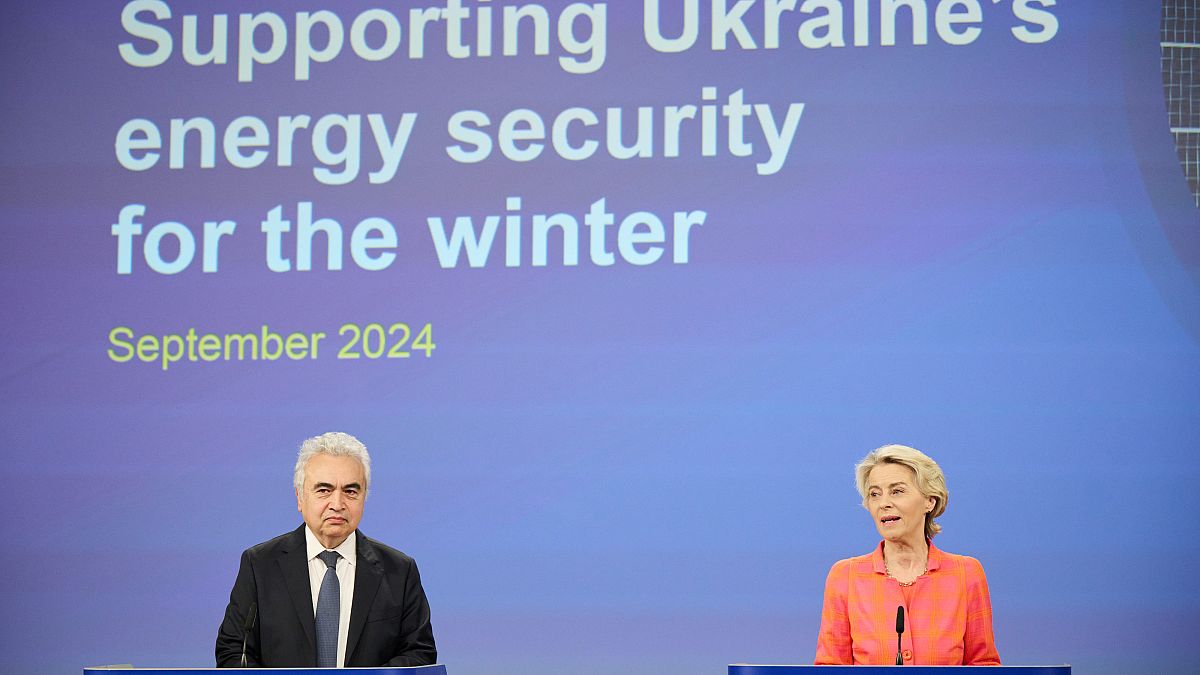With 80% of thermal plants destroyed, Kyiv is facing a difficult winter – but some worry EU support means higher prices for Europeans.
Frozen Russian assets seized by the EU will be used to help provide 15% of Ukraine’s energy needs ahead of the winter, Commission President Ursula von der Leyen told reporters on Thursday (19 September).
The EU is ready to send €100 million for repairing power plants and boosting renewables, offering around 2.5 Gigawatts of capacity, and a further €60m will go to humanitarian aid, shelters and power generators in Ukraine’s worst-affected regions, von der Leyen said.
The Commission says it’s offered the country over €2 billion for energy security since Russia invaded in 2022, and that 80% of Ukraine’s thermal plants and a third of hydropower capacity are now destroyed.
That follows repeated Russian attacks on critical infrastructure; the latest missile attack on 26 August left millions of Ukrainians without electricity for hours.
“It is only right that Russia pays for the destruction it caused. We know more is needed. We must keep transferring part of the proceeds from immobilised Russian assets to Ukraine’s energy resilience,” said von der Leyen, who meets Ukrainian President Volodymyr Zelenskyy tomorrow in Kyiv.
Fatih Birol, executive director of the International Energy Agency, told reporters that the EU could aid its war-torn neighbour by stepping up electricity transmission “without compromising energy security in the bloc”.
The IEA has promoted building up natural gas storage and encouraging consumers to reduce energy consumption.
Moldova also depends on transit arrangements between Russia and Ukraine that expire at the end of this year, Birol added, implying significant uncertainty for the Moldova’s electricity supply, and gas deliveries to Transnistria in particular.
All for one, one for all
While the EU remains broadly united in support for its eastern neighbour, Greek Prime Minister Kyriakos Mitsotakis has questioned the impact of synchronising Ukraine with the EU electricity grid, a process completed in March 2022.
“Russia’s attacks against the Ukrainian grid have turned Ukraine into a significant net importer. This deficit is being met by EU countries. This is another cost that Russia’s devastating war is imposing on our economies,” said a letter Mitsotakis sent von der Leyen on 13 September, noting that power prices per Megawatt-hour in Greece have more than doubled from €60 in April to €130 in August.
“Similar increases were seen in Bulgaria, Romania, Hungary, Croatia, and other member states. This is a regional crisis,” the letter added.
But an EU official, speaking on condition of anonymity, told reporters that price volatility came from numerous factors, including a mismatch between supply and demand, a lack of storage, and inefficient use of interconnectors.
“We need to look into other possibilities and other means,” the EU official said, adding: “We will look at the legal possibilities together with the Greek government.”
More financial aid
Today’s announcement comes as member states intensify talks on a $50bn (€46bn) loan for Ukraine, to be backed by the world’s seven major developed democracies using Russia’s immobilised assets as collateral.
The interest earned by the frozen state funds would serve to gradually repay the loan so national governments don’t have to plug the major hole in Ukraine’s budget.
The EU is looking at how the plan can be made immune from a possible veto from Ukraine-sceptic Hungary, which could cause the loan to unravel.
Jorge Liboreiro contributed reporting.

